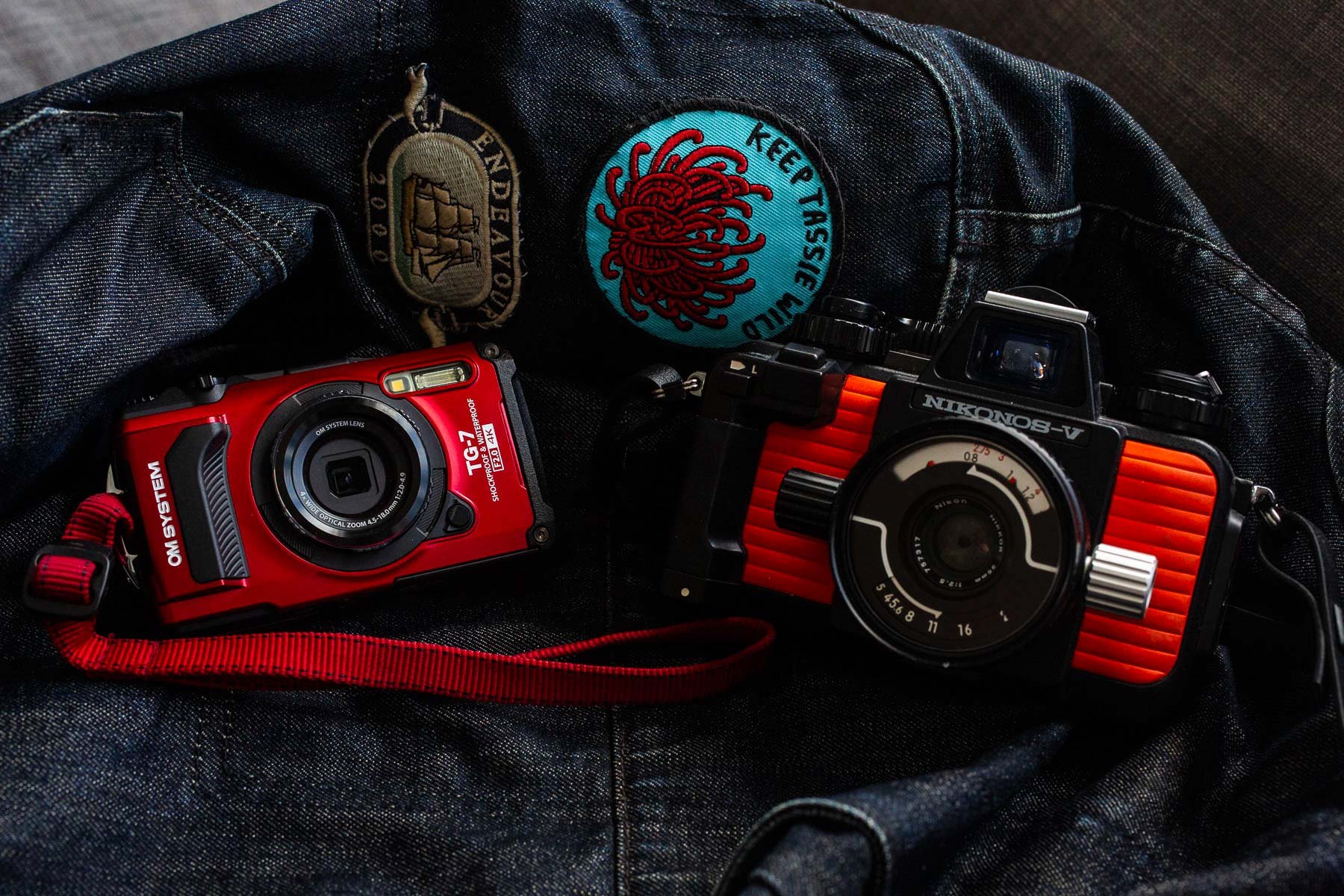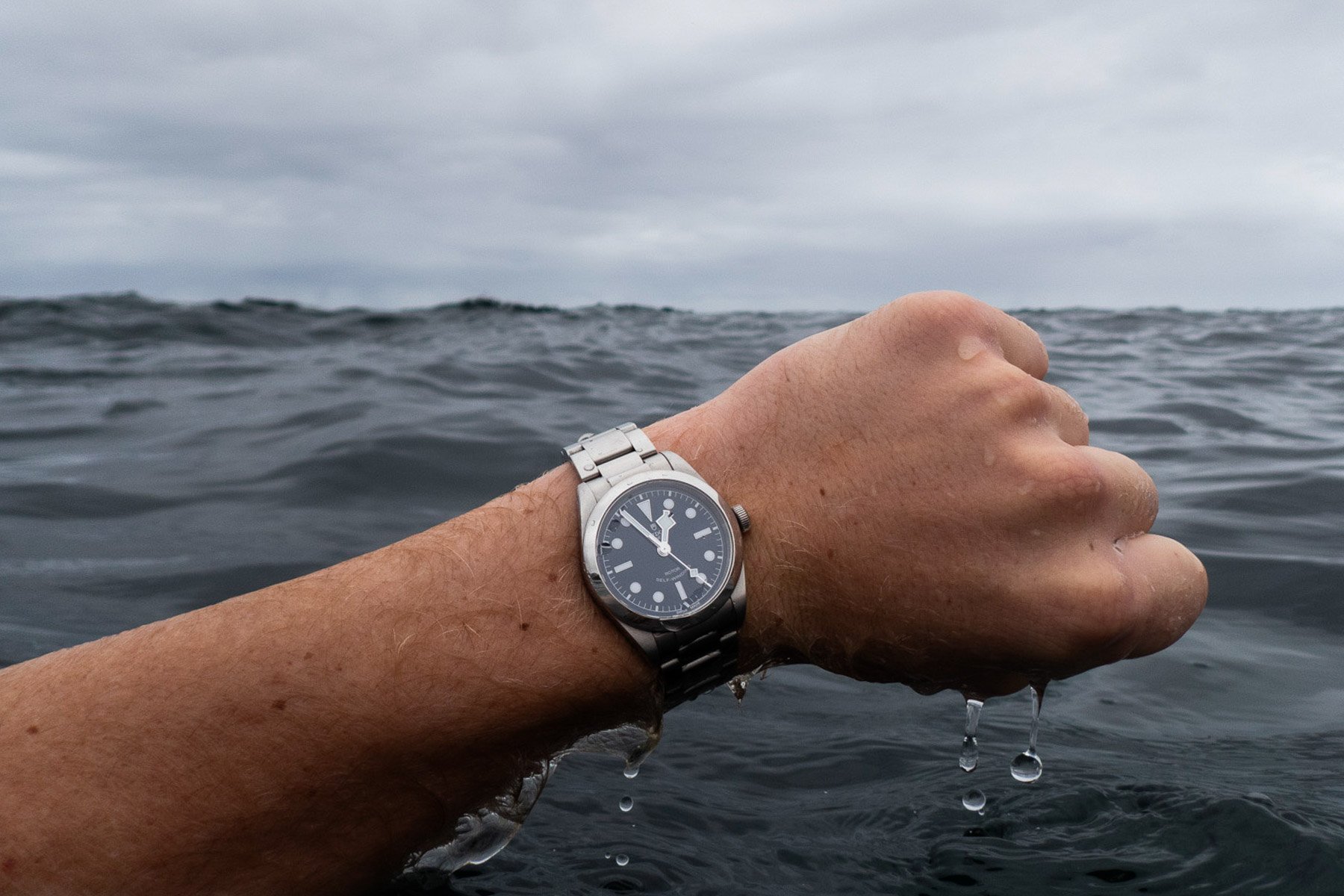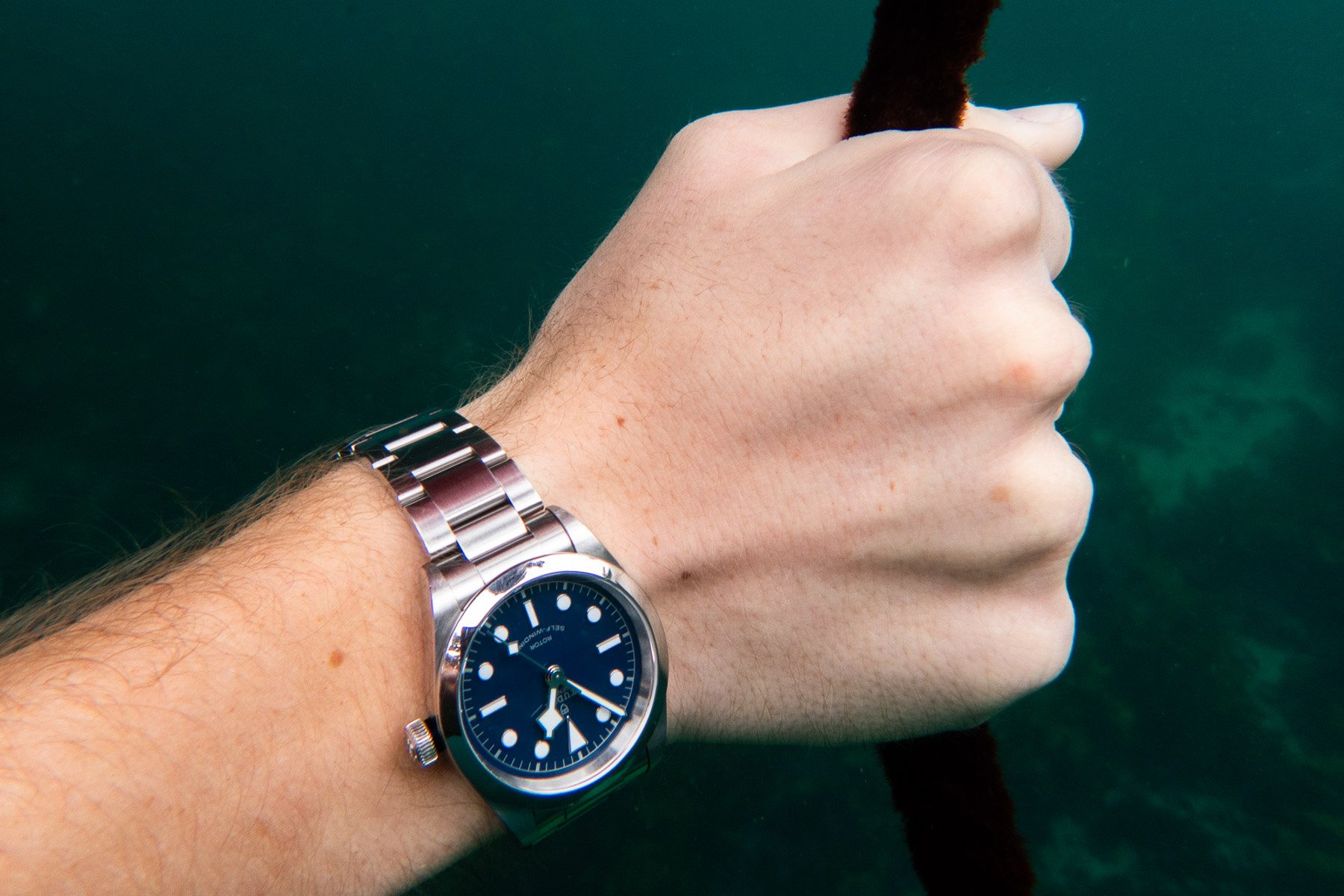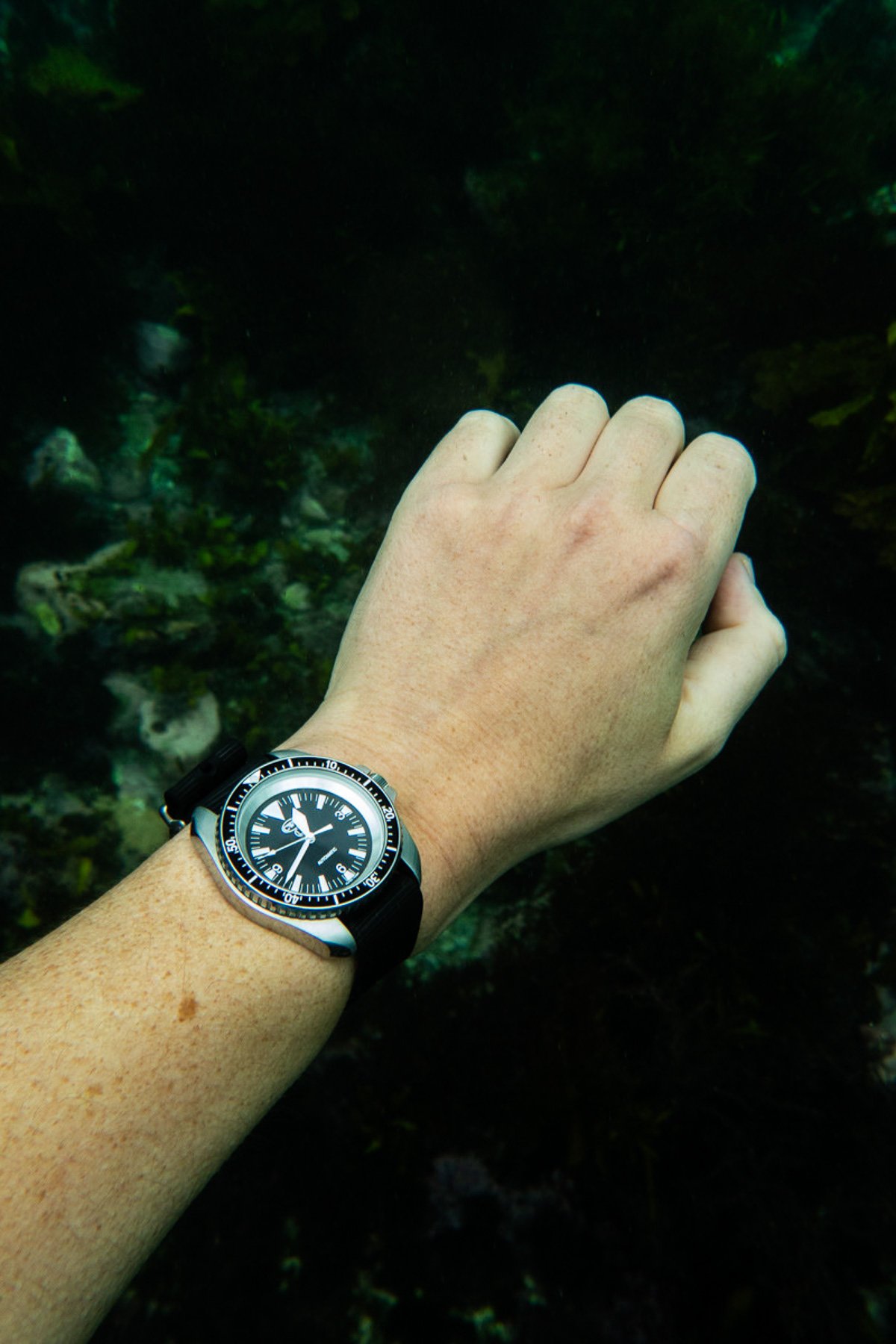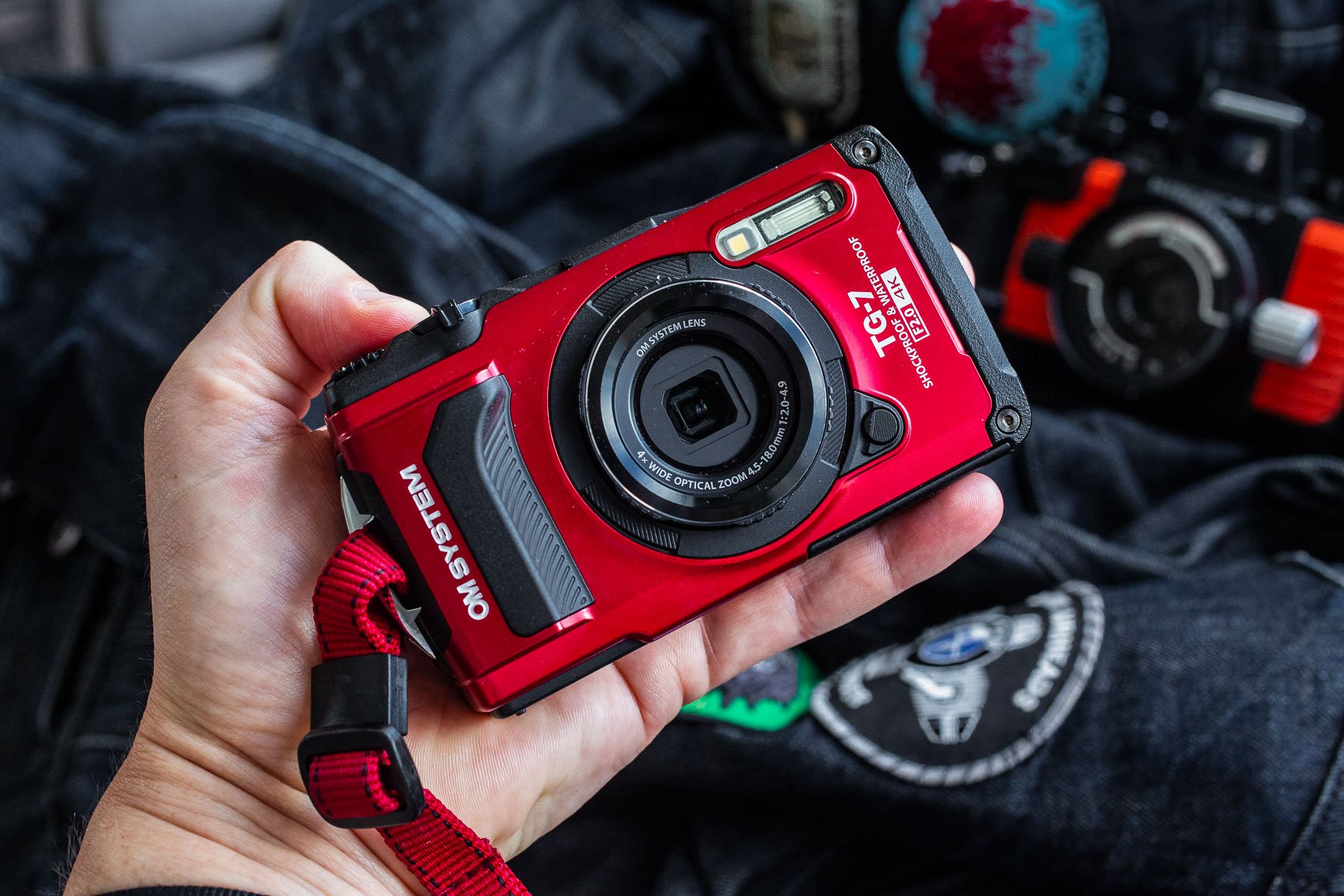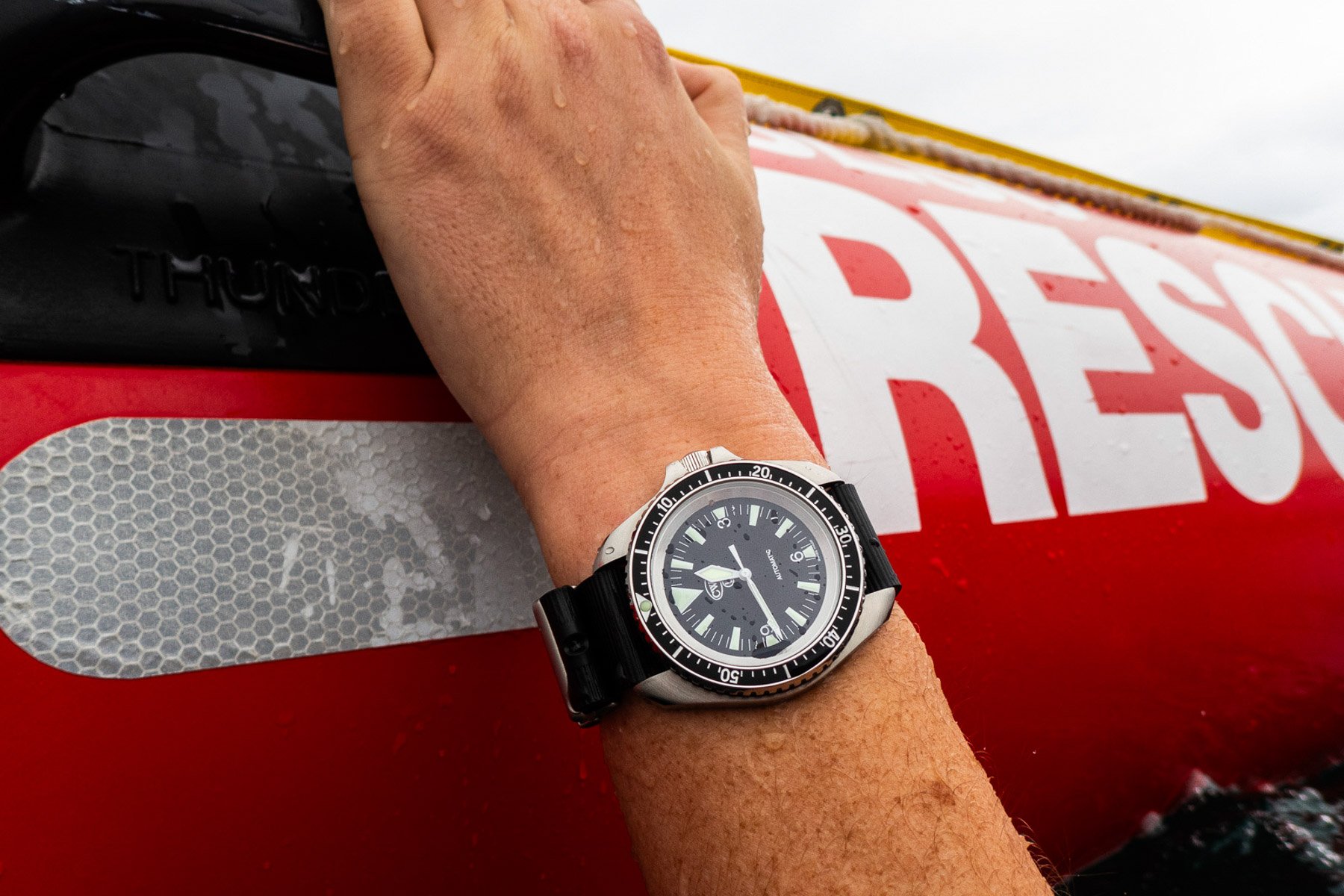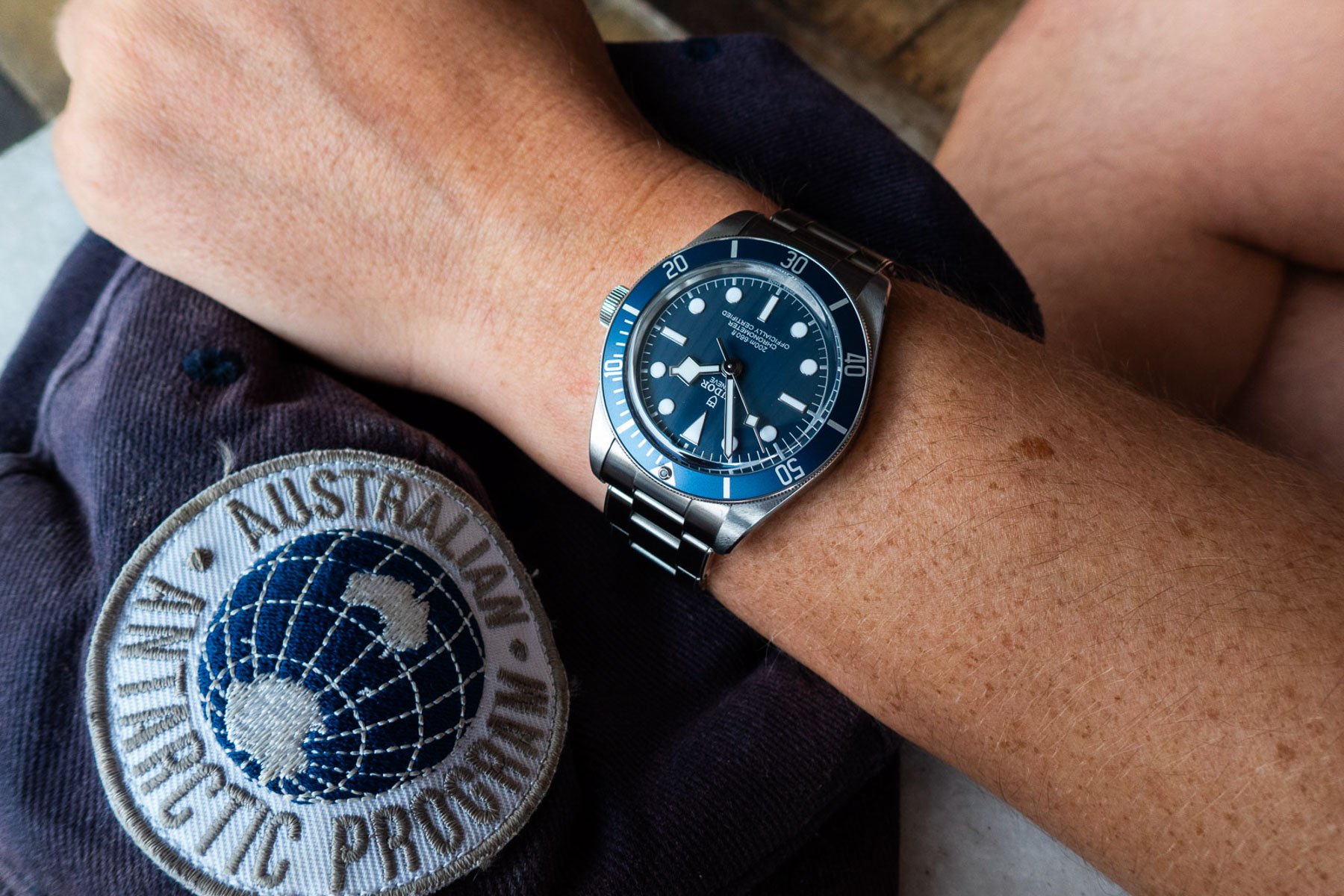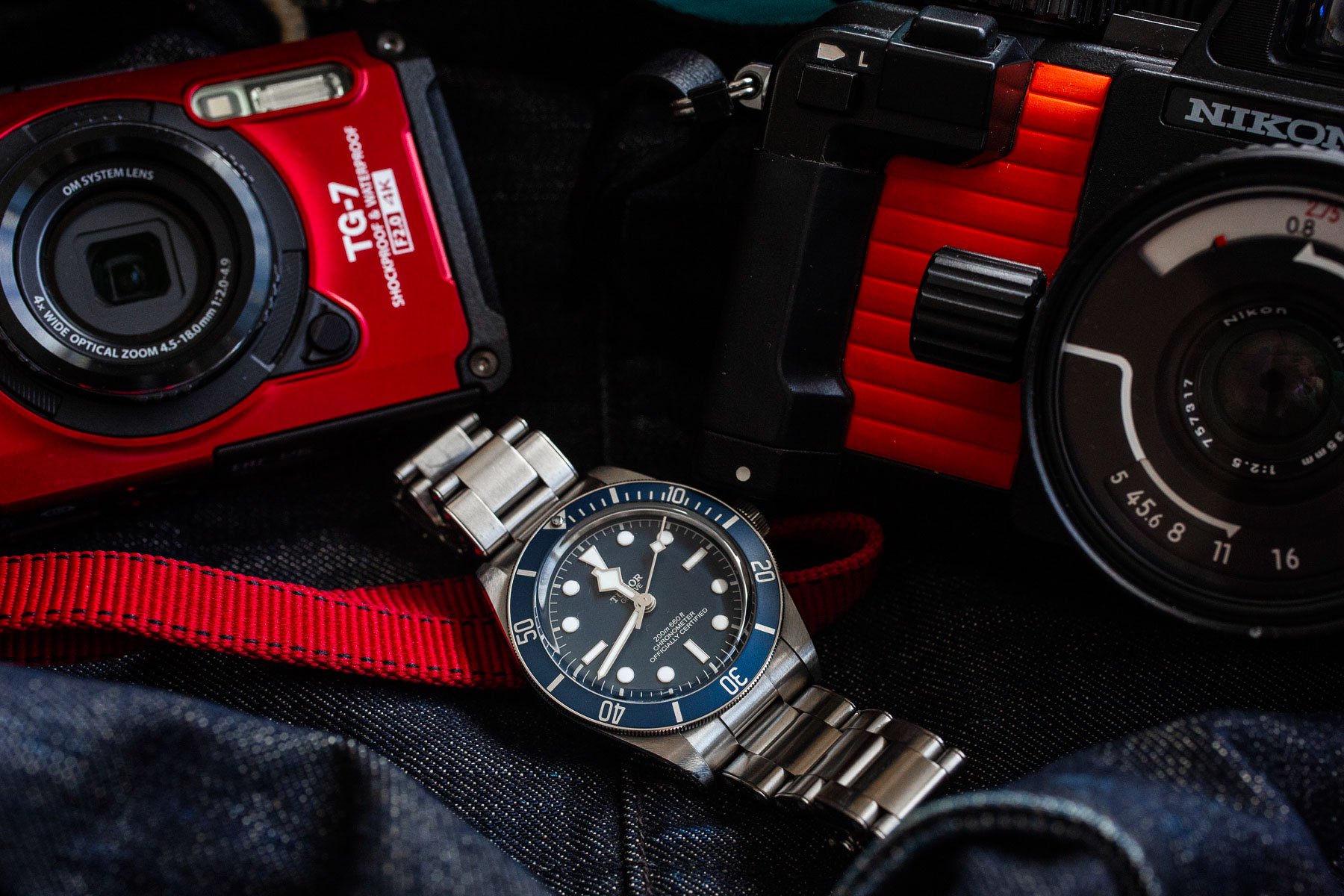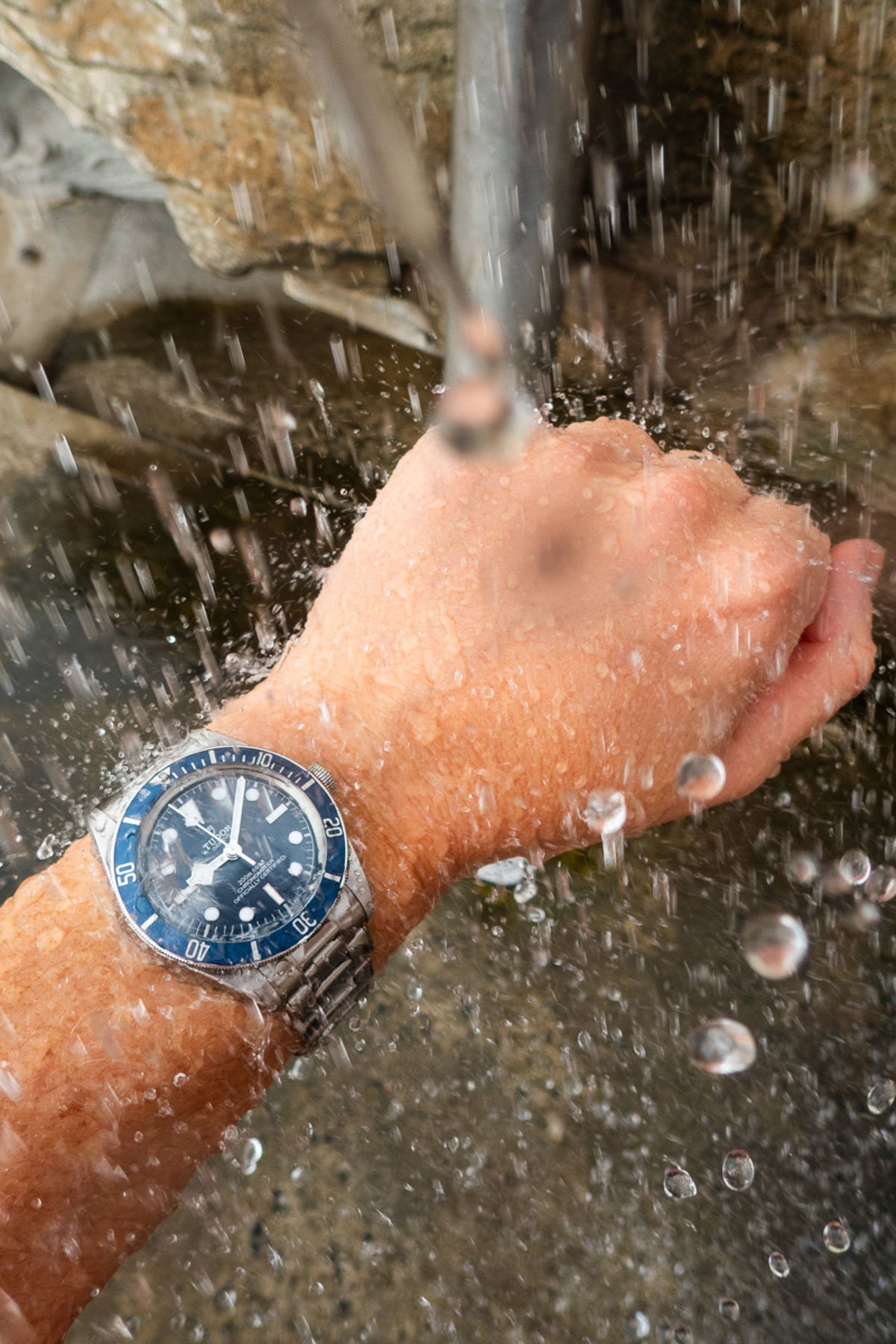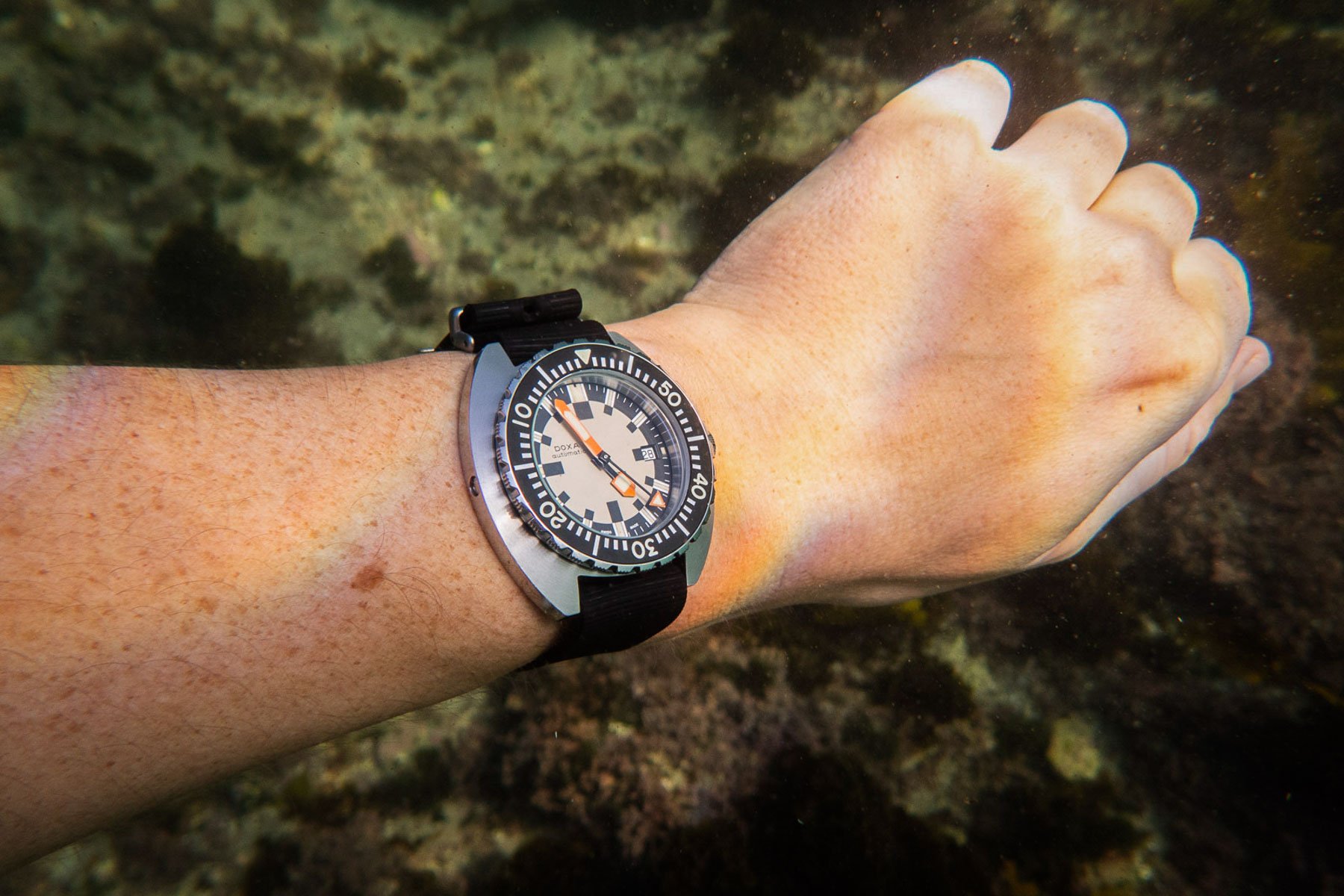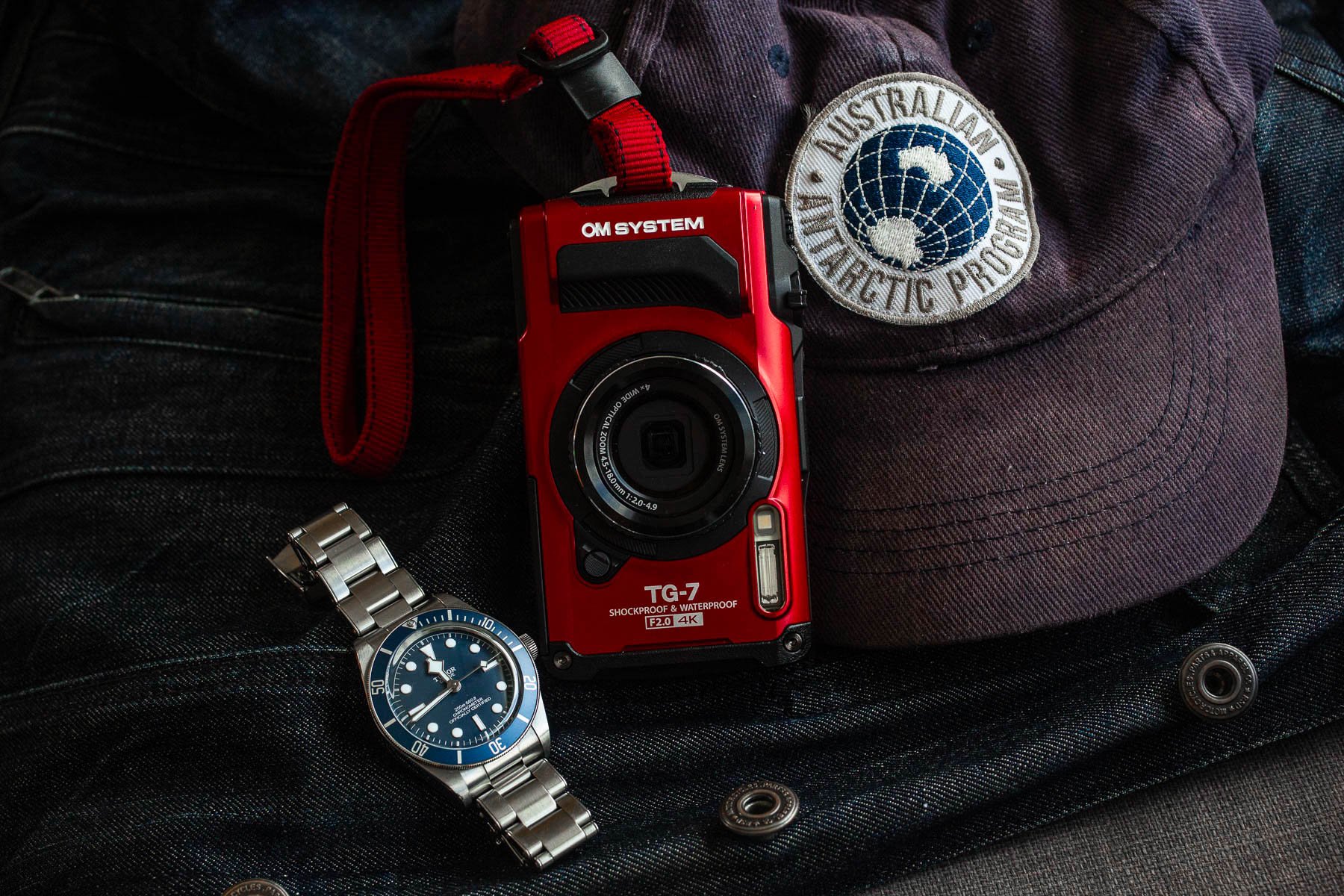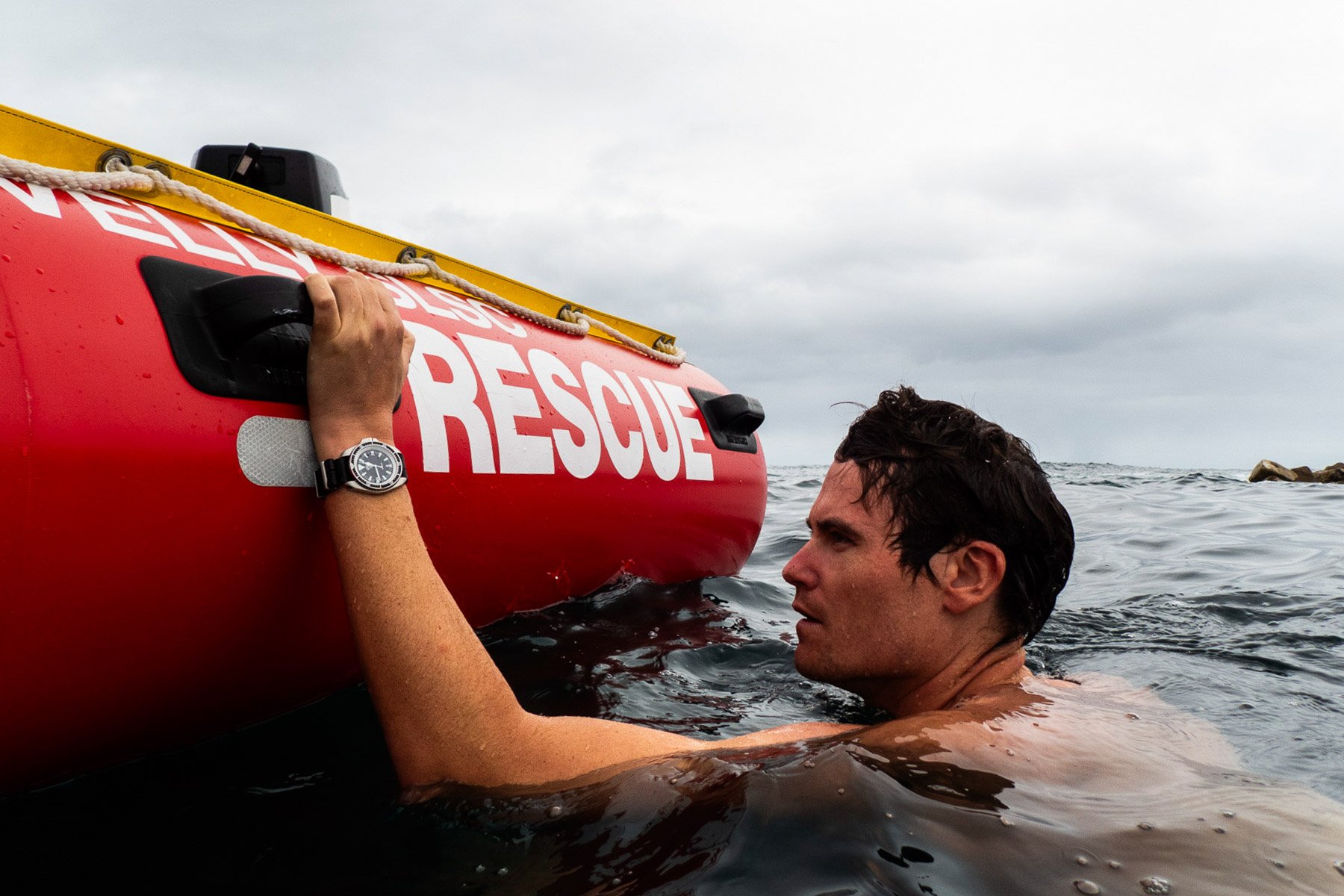Exploring Underwater Watch Photography With The OM System TG-7
Living close to the ocean has meant that I’ve always had an affinity for watches that can handle a little seawater. It’s no surprise, then, that I seem to gravitate towards dive watches. And for even longer than I’ve had an active interest in watches, I’ve been fascinated by photography, not only as an integral part of my day job but also as a personal passion. So it seems natural that I started experimenting with underwater photography last year, using a Nikonos-V film camera with a 35mm lens. This was the perfect film camera for holidays and camping trips because of its robust build and the joy of shooting film. With the wait and anticipation to see what sort of images I managed to take once the film gets developed, there is a certain excitement to it that other film shooters will relate to.
As fantastic and fun as it is using the Nikonos-V film camera, I also craved the convenience of digital. But I shied away from the prohibitive price entry points of underwater housing for my Canon DSLR or something similar. Over Christmas, however, I was on a break visiting my partner’s family in South Australia. I was in a camera store and saw this little camera in an attractive racing red. It turned out to be the small OM System TG-7. When I heard that this little camera, no bigger than a smartphone, could go 15 meters deep without requiring any housing, I knew that I would need to get one at some point. Then I read Nacho’s feature review of the Nikon Zf, felt greatly inspired, and knew that I had to get the TG-7 soon!
A fun photographer’s trick
For me, photography and watches are a natural fit. I’ve been photographing fully manually for 12 years and do a lot of the photography for my Fratello stories. I also utilize my photography skills in my day job. I learned the old-school way as an assistant for a studio photographer, learning everything from exposure to how to use both natural and studio light, film and digital editing, and post-production. One of the most fun things — and it’s not a bad party trick — is being able to accurately judge exposure settings for friends using cameras just by looking at the subject.
Say you are on a bus with a friend who wants to take a shot of an area where it’s difficult to judge exposure, like the shadows under someone’s eyes. It is fun to rattle off a shutter speed, ISO speed, and aperture speed and be accurate with your guess — like a human light meter, as a friend of mine says. When you have shot thousands of individual photos using an ISO 400 film or a consistent baseline-speed digital ISO setting, you can teach yourself this cool trick. With this in mind, I wanted to clarify my approach to this review.
My approach to this review
I went into this story wanting to provide a general sense of what this camera is like, not a detailed or technical review. There are plenty of those out there. Though I could tread that path, I am much more interested in what this camera feels like to operate and the experience I’ve had in using it underwater for shooting watches. This is about the vibe of the camera, not a rundown of its technical capabilities.
One of the most difficult areas to use natural light is under the ocean. Light changes very quickly at different depths. This also affects the way we see color underwater. Do you remember that story of why the Doxa Sub 300 came in orange? Apparently, according to tests carried out by divers for the brand back in the 1960s, orange was the easiest color to see at certain depths underwater. Photographing watches underwater, then, creates all sorts of challenges and is also some of the most fun I have had in watch photography thus far.
Getting the camera in hand
Fast-forward one month, and after doing some more research, I had my very own OM TG-7 arrive in the mail. This compact point-and-shoot camera has a small 12-megapixel sensor and does not have a fully manual mode. As I usually shoot in manual mode, I knew this would take some adjustment. If you want to hear more about some of the tips, tricks, and experiences from the Fratello team, check out our podcast episode on the subject. You can also see a list of some of our favorite watch photographers on Instagram here.
As mentioned previously, the OM TG-7 has a 12MP sensor. Normally, this would be a little too small for me. But the key is that, unlike many other waterproof compact cameras, the TG-7 can shoot RAW images. The ability to have as much leeway as possible for a lossless file when editing an image is an absolute must for any serious photographer! This is particularly true when you are underwater or on/near the surface where conditions can change in an instant.
The ergonomics of the TG-7 are magnificent. It is no longer or wider than my iPhone 6 (though it is thicker). Having a camera that can handle all sorts of weather conditions and fit in my pocket is a novel feeling that I don’t expect to wear off anytime soon. The 3″ LCD screen is bright and sharp, which makes establishing whether you’ve nailed focus straightforward unless in very bright sunlight. I don’t have anything to compare the TG-7 to except perhaps a smartphone in a special underwater housing. I’d always much rather use a dedicated camera, though. I am too fond of the idea of being untethered to my phone while in the sea.
Close-ups
The camera has a great macro capability, although this pretty much requires the purchase of a ring light (an accessory that, granted, doesn’t cost too much at all). While I have yet to get this accessory, it could be an incredibly useful feature for those wanting to shoot detailed images of their watches underwater. Macro is practically a must for watch photography since the minimum focusing distances of many lenses are not quite close enough to take detailed watch photos.
Out of the ocean, the OM TG-7 is a small, rugged-feeling compact camera — nothing extraordinary here. In these conditions, unless I am expecting rain, I would much rather use my Canon 5D MKIII with a macro lens for professional-looking watch photos. But — and it this a big “but” — for any inclement weather or situations where packing light will be an advantage, such as a hike or packing a small bag for a holiday, the OM System TG-7 is an incredibly attractive option. It is very handy to have as a writer who takes photos on the go.
Getting the OM System TG-7 wet
It is in the ocean where this camera shines the most. For a full breakdown of how to use this in scuba settings, I recommend this website, which has a lot of instructional videos. Even though this camera is water resistant to 15 meters (that’s a literal 15 meters, not 15 meters in watchspeak), taking the camera with its wrist strap into the ocean on the very day that I received it felt, well, downright strange! But once the TG-7 had gotten its first dunk in the sea, that feeling quickly washed away. When getting mine, I opted for the bright red version over the black so that if I dropped it in the ocean, it would be easier to find!
At first, I thought I would miss the lack of an optical viewfinder, a feature that my old Nikonos-V has. Surprisingly, this didn’t happen. The LCD screen is like a giant electronic viewfinder. It’s relatively easy to use and see underwater, except in the brightest of conditions (in which case, using the 25mm wide lens and just pointing, shooting, and hoping for the best works just fine).
One last tip for better results
I followed the advice on camera forums about how to get as little computer input in the shooting process and make the camera as manual as possible (as mentioned, the TG-7 does not have a manual mode). To do this, set a maximum ISO speed for exposure (I set mine at 400), a minimum shutter speed (mine hovers between 1/125th and 1/160th of a second), and leave the camera in aperture priority at f2.8. This, I find, provides the most control over exposure while in the ocean. I can use the small toggle near my right thumb to shift between f2 and f8 (I rarely need to, with the variable shutter speed up to 1/2000th of a second being a more useful variable underwater). This system works best shooting wide at 25mm. As you zoom in to the maximum of 100mm, the minimum aperture goes down to f4.9.
Final thoughts
The little OM System TG-7 is a gem of a camera. I have not had this much fun in a while, and isn’t that what photography should be about? Though I haven’t owned this camera for long, I’ve already used it for a review and taken it out on several dives. It will also have professional use as a backup or travel camera for this working journalist. Also, the optional extras, such as a scuba-dive housing, that enhance this camera’s capabilities are worth mentioning.
I’ve tested the TG-7 with half a dozen different sports watches, and it has helped me to get a much better understanding of what dive watch has the most clarity underwater or the different characteristics of each. You can see some of those examples on my Instagram and in this article. But what do you think, dear Fratelli? Do you shoot underwater, and if so, what is your setup? And if not, would you consider giving this little TG-7 a try? You’ll find me using mine in the Pacific Ocean this weekend.

